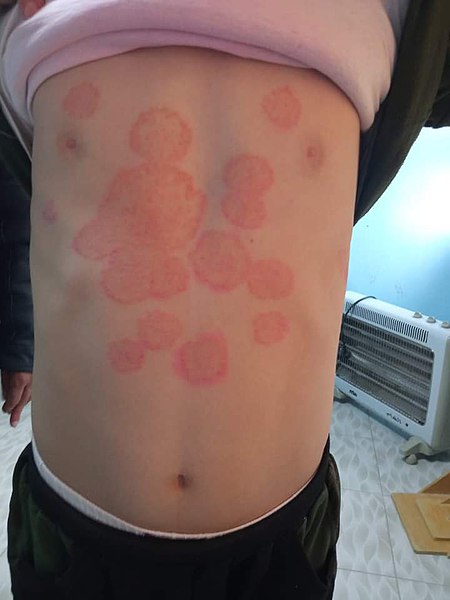Playlist
Show Playlist
Hide Playlist
Dermatophyte (Tinea) Infections: Introduction
-
Slides Dermatophyte Tinea Infections Introduction.pdf
-
Download Lecture Overview
00:00 Welcome to our lecture on Dermatophyte infections. 00:04 Firstly we're going to start with an introductory lecture. 00:07 Fungal infections can be divided into three major groups. 00:11 The dermatophytes that affect the epidermis, the hair and nails. 00:19 Yeasts, due to candida and tinea versicolor. 00:24 As well as deep fungal infections, with all those listed conditions that we see there. Dermatophyte infections, we're now going to focus on that. 00:33 And it's also known as ringworm or tinea. 00:36 It's a superficial fungal infection of the skin, nails and hair and is caused by dermatophytes. 00:44 Looking at the etiology, molds that require protein keratin for growth are keratinophilic and they all fall under dematophyte s. 00:56 Infections in humans is caused by epidermophyton, which is a type of a dermatophyte, microsporum, and trichophyton. So let's look at the pathophysiology of dermatophyte infection. 01:14 Dermatophytes are usually transmitted via direct contact with the infected skin, nail, or hair. These fungi are keratinophilic, meaning that they like keratin and they release various proteinases to establish infection in the stratum corneum. 01:33 And we all know from our basic information that the stratum corneum has got keratin. 01:39 The fungi then grows in the superficial layers of the epidermis, resulting in characteristic cutaneous manifestations which we will discuss. 01:48 Symptoms usually arise as a result of inflammatory reactions of the host to different fungal antigens. 01:56 Now let's take a look at some general risk factors for dermatophyte infections. 02:03 First we have medical risk factors. 02:07 This is one of them is previous or concurrent tinea infection. 02:13 Diabetes mellitus is another risk factor for dermatophyte infection. 02:18 And of course lastly under medical we've got immunodeficiency which can also be a risk factor for dermatophyte infection. 02:29 We also have environmental risk factors, for example, conduct spread from family members and contact from family pets. 02:42 So the clinical classification of dermatophyte infection is based on the anatomical location of the lesions. 02:48 So it could be involvement of the skin hair and thirdly nails. 02:53 So if you look at the epidermis these are the different ways that dermatophyte infection affects the epidermis: tinea corporis, tinea faciei, it's the face. Corporis if it's the body. 03:08 Pedis if it's the feet. 03:10 Cruris if it involves the groin. 03:12 And tinea manuum if it affects the palms. 03:16 If it involves the hair, we'll call it tinea capitis or tinea barbae if it involves the beard. 03:24 Nails, we have tinea unguium and dermatophytes involving the unguium or nails, we call it onychomycosis.
About the Lecture
The lecture Dermatophyte (Tinea) Infections: Introduction by Ncoza Dlova is from the course Fungal Skin Infections in Patients with Darker Skin.
Included Quiz Questions
Which of the following correctly describes the clinical classification of a dermatophyte infection affecting the groin area?
- Tinea cruris
- Tinea corporis
- Tinea pedis
- Tinea manuum
- Tinea faciei
What specific property allows dermatophytes to establish infection in the stratum corneum?
- They are keratinophilic and release proteinases
- They produce melanin which blocks host immune response
- They secrete lipases that dissolve the epidermal barrier
- They form biofilms resistant to host defense mechanisms
- They release toxins that cause direct cellular damage
Customer reviews
5,0 of 5 stars
| 5 Stars |
|
5 |
| 4 Stars |
|
0 |
| 3 Stars |
|
0 |
| 2 Stars |
|
0 |
| 1 Star |
|
0 |




